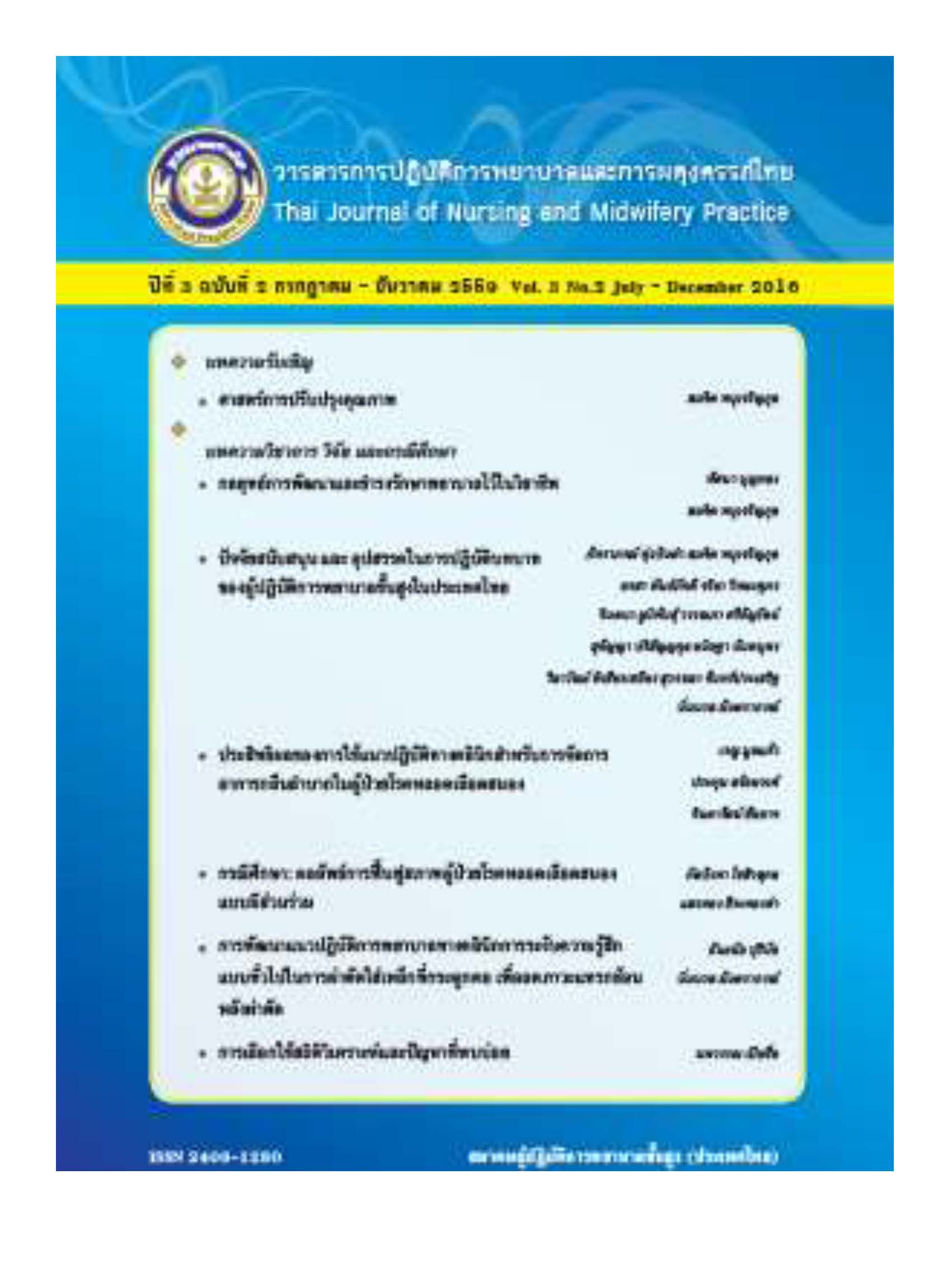Case Study: Outcomes of Participatory Rehabilitation in a Patient with Stroke
Main Article Content
Abstract
กรณีศึกษานี้มีวัตถุประสงค์เพื่อศึกษาผลลัพธ์การฟื้นฟูสภาพผู้ป่วยหลอดเลือดสมองและครอบครัวแบบมีส่วนร่วม ผ่านแนวคิดการเสริมพลังอำนาจ และทฤษฎีการเปลี่ยนผ่าน ให้การพยาบาลโดยการประเมินความสามารถในการทำกิจวัตรประจำวัน ความแข็งแรงของกล้ามเนื้อ ภาวะซึมเศร้า ให้ข้อมูลในการฟื้นฟูสภาพของผู้ป่วยและครอบครัว ใช้วิธีการสาธิตและสาธิตย้อนกลับวิธีการต่างๆ ในการฟื้นฟูสภาพ ทำการเยี่ยมบ้าน การประสานและส่งต่อบุคลากรทีมสุขภาพ เพื่อร่วมในการแก้ไขปัญหาอย่างเป็นระบบและช่วยฟื้นฟูสภาพอย่างต่อเนื่องจากโรงพยาบาลสู่บ้าน ตามบริบทของผู้ป่วยและโดยการมีส่วนร่วมของครอบครัวส่งผลให้ผู้ป่วยฟื้นหายโดยเร็ว สามารถปฏิบัติกิจวัตรด้วยตนเอง และญาติผู้ดูแลไม่มีภาวะซึมเศร้า กรณีศึกษานี้ เสนอแนะว่า การดูแลผู้ป่วยโรคหลอดเลือดสมองและครอบครัวควรปฏิบัติอย่างเป็นระบบ และอย่างต่อเนื่อง สอดคล้องกับบริบทของผู้ป่วยและครอบครัว ร่วมกับการเพิ่มแรงสนับสนุนทางสังคมในการช่วยเหลือญาติผู้ดูแล จะส่งผลให้ผู้ป่วยฟื้นฟูสภาพได้โดยเร็ว มีคุณภาพชีวิตที่ดี และทำให้ครอบครัวมีความผาสุก


